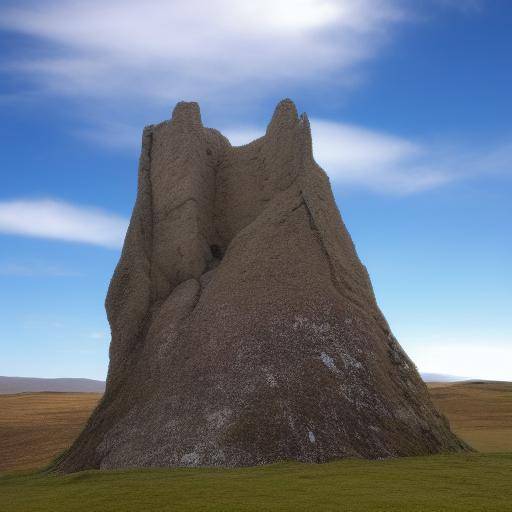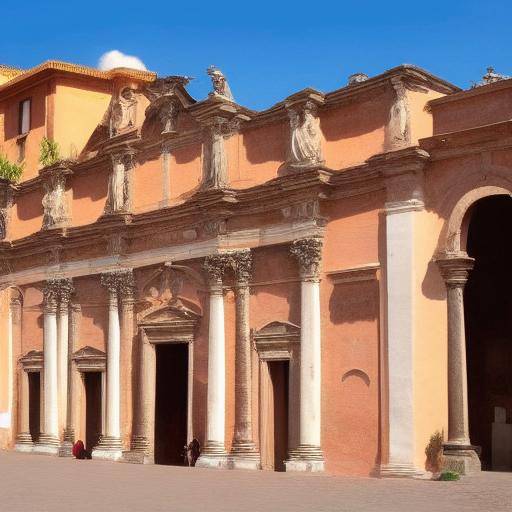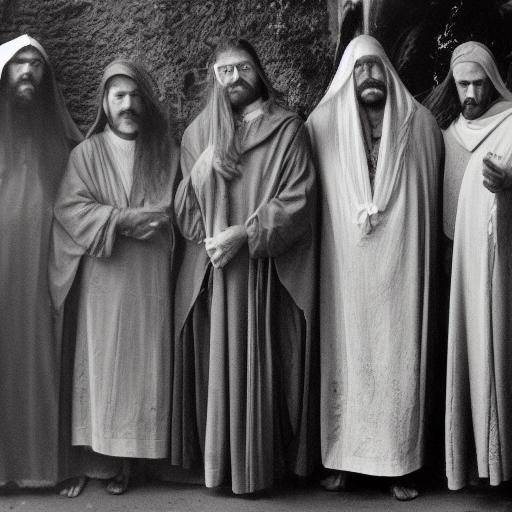
The Stone of Destiny, also known as the Stone of Destiny of Scotland, is an object loaded with history, mysticism and cultural significance. Known in Gaelic as "Lia Fáil", this relic has witnessed coronations, prophecies and thefts throughout the centuries, adding layers of intrigue to its history. In this article, we will explore the fascinating history and mysteries surrounding the Stone of Destiny, as well as its profound meaning in the history of Scotland.
History and Meaning
The Stone of Destiny has played a central role in the crowning of the kings and queens of Scotland for centuries. According to legend, this ancient rock comes from Ireland and was moved to Scotland in ancient times. It is believed that the rock has the power to recognize the true legitimate monarch of Scotland, which makes it a symbol of enormous importance in the history of the country.
In 1296, the Stone of Destiny was stolen by King Edward I of England and moved to the Westminster Abbey in London, where it was integrated into the royal throne. For centuries, the stone was used in the crowns of English monarchs, which generated tensions and conflicts with Scotland.
Coronations and Traditions
The coronation ceremony of a Scottish monarch with the presence of the Stone of Destiny is a deeply rooted event in Scottish history and culture. The rock, located below the throne, symbolizes the legitimacy and spiritual connection of the monarch with the earth and its people.
Prophecies and Legends
Throughout the centuries, numerous prophecies and legends arose around the Stone of Destiny, amplifying its aura of mystery and power. It is reported that the stone will scream if the legitimate king of Scotland sits on it, a rite that has given rise to theories and myths about his supposed prophetic power.
Robots and Reivindications
The theft of the Stone of Destiny by Edward I of England marked a crucial point in its history, triggering a series of events that led to its eventual recovery by Scotland in 1996. This theft and subsequent demands have fueled the flames of nationalism and Scottish identity, making stone a symbol of the struggle for independence and sovereignty.
Cultural and Legacy Importance
The Stone of Destiny is not only an object of great historical and political importance, but also an emblem of Scottish identity. Its symbolic power and its intrinsic significance make it a fundamental piece of Scotland's cultural heritage, uniting the past with the present and projecting its influence toward the future.
Conclusion
The Stone of Destiny, with its history of coronations, prophecies and thefts, represents a living legacy of Scottish history and culture. His mysticism and meaning transcend the borders of time, reminding everyone that true greatness lies in the connection with our roots and in the preservation of our legacy.
FAQs
What is the origin of the Stone of Destiny?
The Stone of Destiny is believed to have its origin in Ireland, from where it was taken to Scotland in ancient times. It has been associated with the crowning of Scottish monarchs for centuries.
How does the Stone of Destiny relate to the coronations in Scotland?
The Stone of Destiny is placed under the throne during the crowns of the Scottish monarchs, symbolizing their connection to the earth and its legitimacy as rulers.
What does the Stone of Destiny have in Scottish culture?
The stone is considered a symbol of Scottish identity and sovereignty, with significant historical and cultural significance. His presence in the coronation ceremonies represents the ancestrality and spiritual connection with the Scottish land.
What is the importance of the Stone of Destiny in Scotland's political history?
The Stone of Destiny has been a key point in Scotland's political history, being the subject of conflicts and claims between Scotland and England. Their robbery and recovery have symbolized the struggle for Scottish independence and sovereignty.
What prophecies and legends surround the Stone of Destiny?
The stone has been associated with prophecies that claim it will scream if the true legitimate king of Scotland sits on it. These legends have contributed to his aura of mystery and power.
What was the impact of the theft of the Stone of Destiny by Edward I of England?
The theft of stone by Edward I of England triggered tensions and conflicts between Scotland and England, exacerbating the aspirations of independence and the struggle for Scottish sovereignty.
How have you tried to preserve and protect the Stone of Destiny throughout history?
Over the centuries, the Stone of Destiny has been the subject of special care and measures to preserve its integrity and symbolic meaning, reflecting its importance in Scottish culture.
What is the current status of the Stone of Destiny and its relevance in contemporary society?
Today, the Stone of Destiny is located in Edinburgh Castle, where it remains an iconic symbol of Scottish history and identity, maintaining its importance in contemporary society.
Over the centuries, the Stone of Destiny has resisted the weight of history, prophecies and tumultuous rivers of politics, emerging as a beacon of Scottish identity and heritage. His presence continues to inspire reverence and wonder, reminding future generations of the unshakable strength of history and culture.




